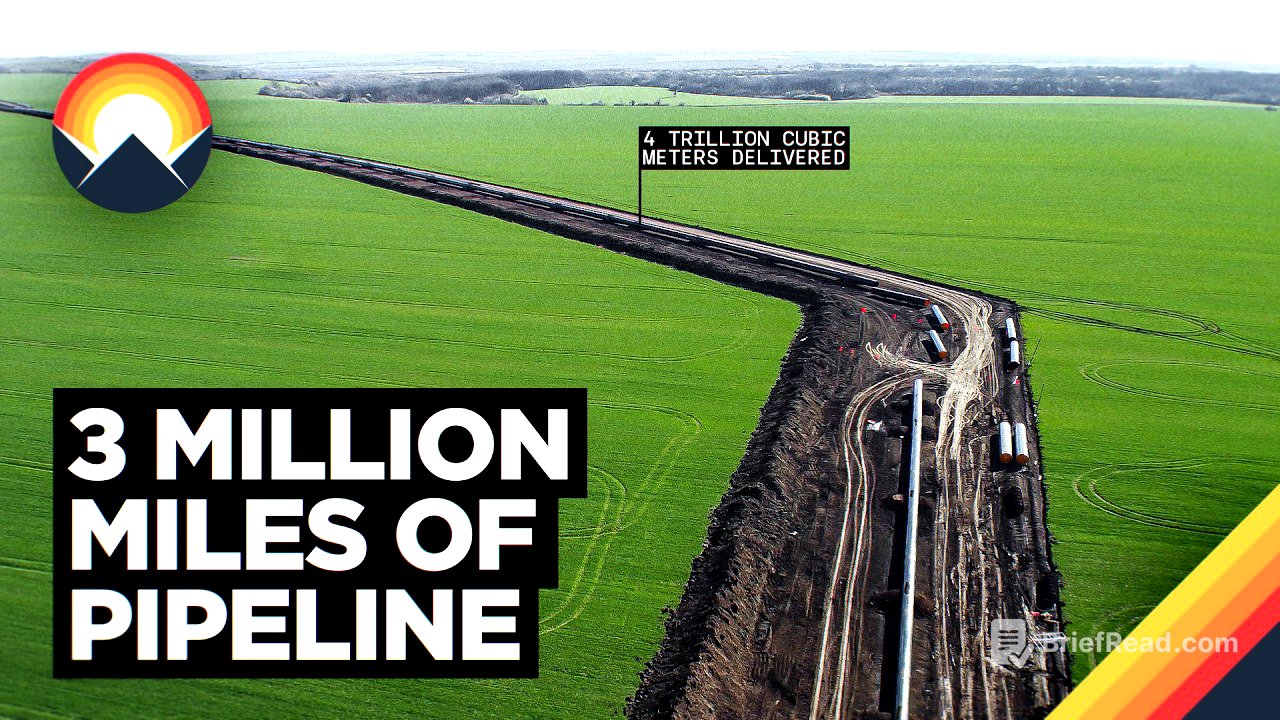TLDR;
This video explores the complex and fascinating system of natural gas transportation and storage in the United States. It highlights the challenges of transporting low-density, flammable gas across vast distances and the role of pipelines, compressor stations, and storage facilities in making this process economically viable. The video also discusses the global trade of liquefied natural gas (LNG) and the importance of liquefaction and regasification facilities in facilitating this trade. Finally, the video touches upon the future of natural gas in a world transitioning to cleaner energy sources.
- Natural gas is transported across the US through a vast network of pipelines, compressor stations, and storage facilities.
- The global trade of LNG is facilitated by specialized tankers that transport liquefied natural gas across oceans.
- The demand for natural gas is expected to peak soon as cleaner energy sources become more prevalent.
Pipelines: The Backbone of Natural Gas Transportation [0:00]
The video begins by explaining the challenges of transporting natural gas, which is a low-density, flammable gas, across long distances. It highlights the importance of pipelines in overcoming these challenges and making natural gas a profitable commodity. The video then delves into the process of pipeline construction, including the acquisition of easements, the construction process itself, and the role of compressor stations in maintaining pressure and efficiency.
Compressor Stations: The Heart of the Pipeline System [4:14]
This chapter focuses on compressor stations, which are essential for maintaining pressure in the pipeline system. The video explains how compressor stations work and their importance in making the economics of natural gas transportation viable. It also discusses the use of "pigs" in pipelines, which are devices used for cleaning, inspecting, and separating different products within the pipeline.
Storage: Ensuring a Steady Supply [8:24]
This chapter explores the different methods of natural gas storage in the US. The video discusses three main types of storage: depleted natural gas fields, salt caverns, and drained aquifers. It highlights the advantages and disadvantages of each method and explains how they contribute to ensuring a steady supply of natural gas.
LNG: The Global Trade of Natural Gas [10:35]
This chapter focuses on the global trade of liquefied natural gas (LNG). The video introduces the Q-Max class LNG carriers, which are the largest LNG carriers in the world, and explains the challenges and economics of transporting LNG across oceans. It also discusses the importance of liquefaction and regasification facilities in facilitating this trade.
The Future of Natural Gas [17:14]
The video concludes by discussing the future of natural gas in a world transitioning to cleaner energy sources. It highlights the increasing adoption of electric alternatives for heating, water heating, and cooking, and the potential decline in demand for natural gas in the coming decades. Despite this, the video acknowledges the importance of the existing natural gas infrastructure and its role in meeting current energy needs.
